Florida is home to an incredible diversity of native reptiles and amphibians—collectively known as herptiles, or “herps” for short. While most of these native herps are small and often out of sight, they are an essential part of local ecosystems.
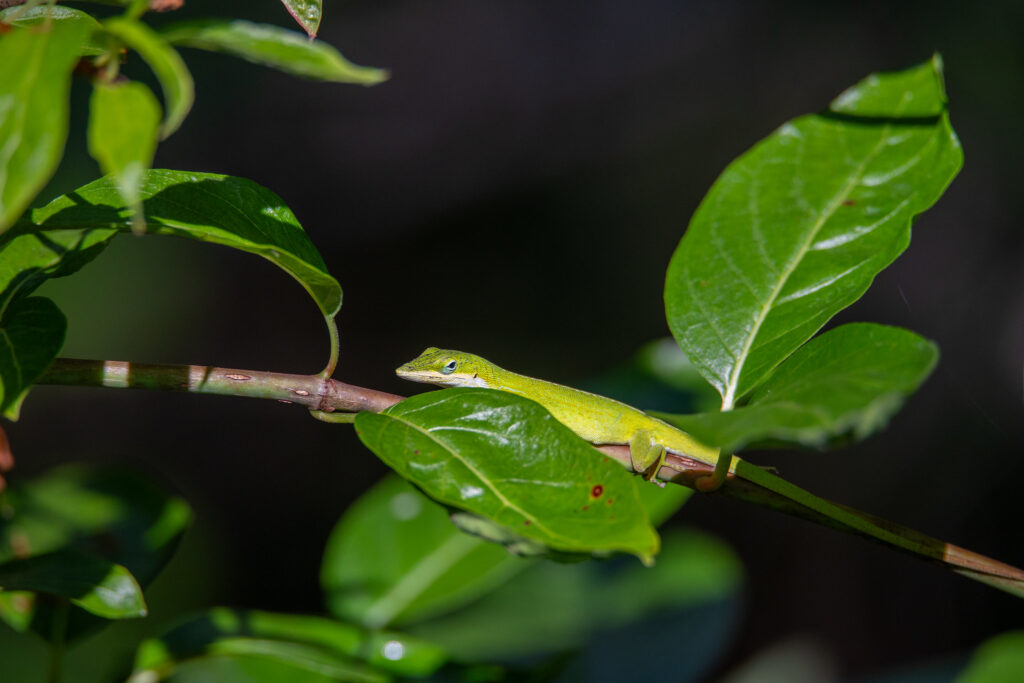
Green anole. Photo by Federico Acevedo
Like all wildlife, herps need food, water, shelter, and a place to raise their young. You can improve habitat for these fascinating creatures—and increase your chances of spotting them—by planting native groundcovers and grasses, keeping leaf mulch under trees and in garden beds, and leaving stumps, stones, and decaying logs in place where possible.
These are Florida herps you are most likely to see in gardens and yards, especially in wildlife-friendly spaces:

Box turtle. Photo by Federico Acevedo
During Florida’s warmer months, box turtles (Terrapene carolina) are often on the move. These land-dwelling turtles are easy to recognize by their highly-domed shells, which range in shades of brown, gray, or tan and are often adorned with striking yellow or orange markings. When threatened, box turtles can pull themselves completely inside their shells and close them tightly using a hinged bottom shell for protection.
Box turtles eat a mix of fruits, vegetables, mushrooms, insects, and other invertebrates. They may even snack on low-hanging garden tomatoes! They can live 50+ years, often staying within the same one-square-mile area, so they should never be relocated. During warm months, you might see them crossing roads—if it’s safe to do so, you can help them across in the direction they’re heading.
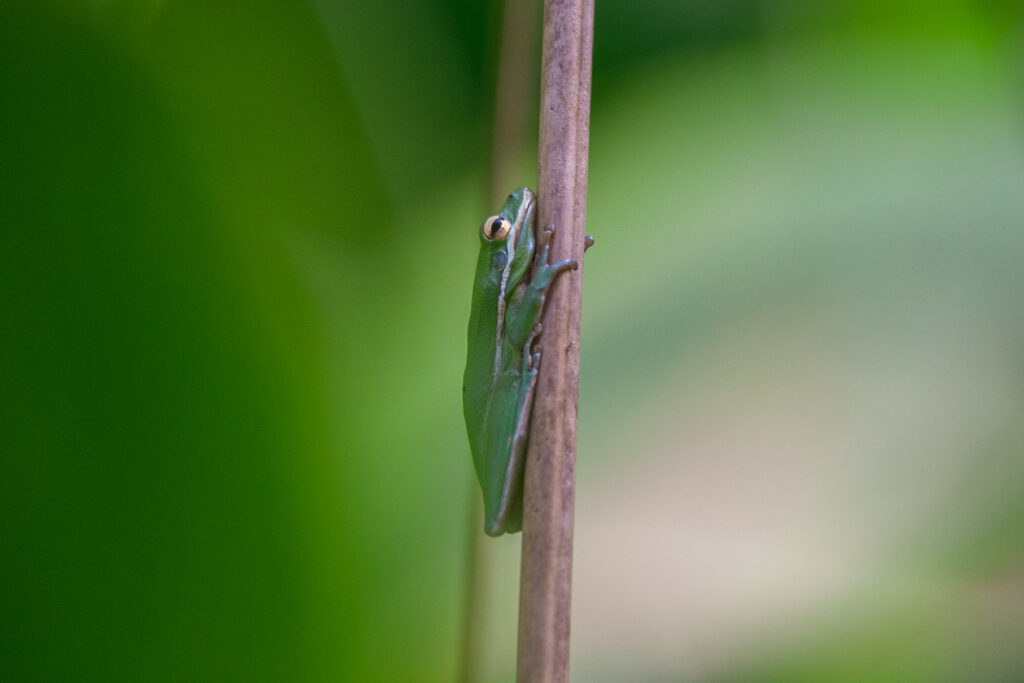
Green tree frog. Photo by Federico Acevedo
Green tree frogs (Hyla cinerea) are found throughout most of Florida. These small frogs are usually bright to dark green, with whitish stripes along their sides, and have large, sticky toepads. They live in trees near water bodies and are commonly found in both natural and developed areas, including moist spots in gardens and yards.
Southern toads (Anaxyrus terrestris) are plentiful throughout most of Florida, in both natural habitats and in yards and gardens, often burrowed in soil or under objects. Their bumpy skin and colors, ranging from tan to reddish-brown or gray, make them easy to recognize. Active mostly at night, adult southern toads feed on a variety of invertebrates, including ants, beetles, crickets, roaches, snails, and more.
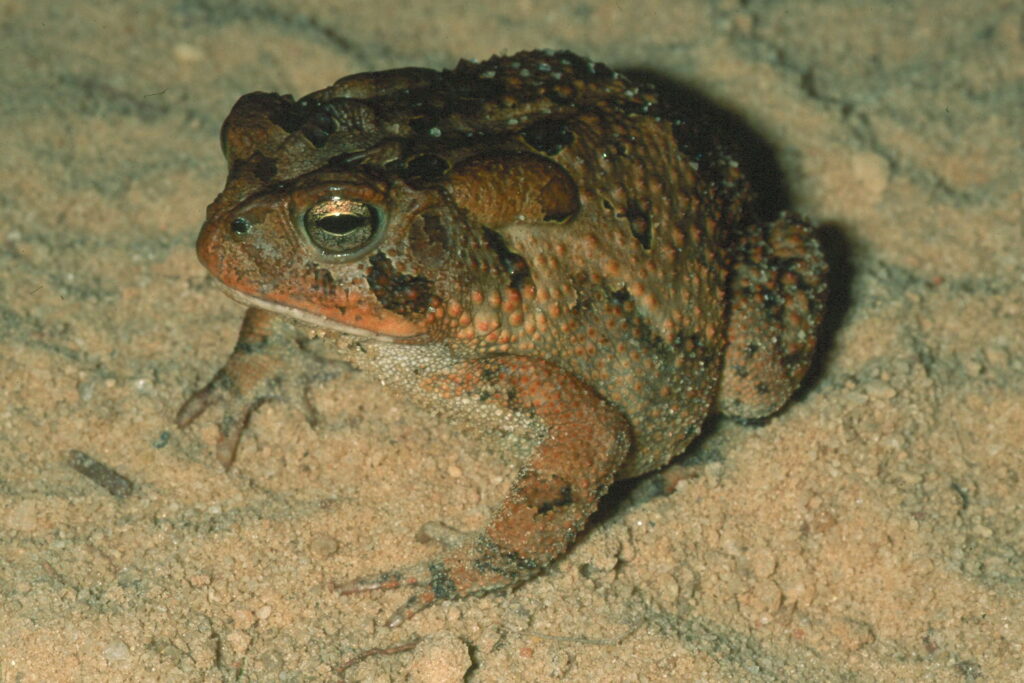
Southern toad. Photo by Kevin Enge | FWC
A garden landscape with a variety of low, medium, and high growing plants provides shelter needed by lizards to escape predators and to maintain their body temperature.
Lizards also serve as natural pest control, feeding on crickets, cockroaches, ants, beetles, and other insects. In turn, they’re an important food source for larger predators like snakes, playing a key role in the backyard food web.
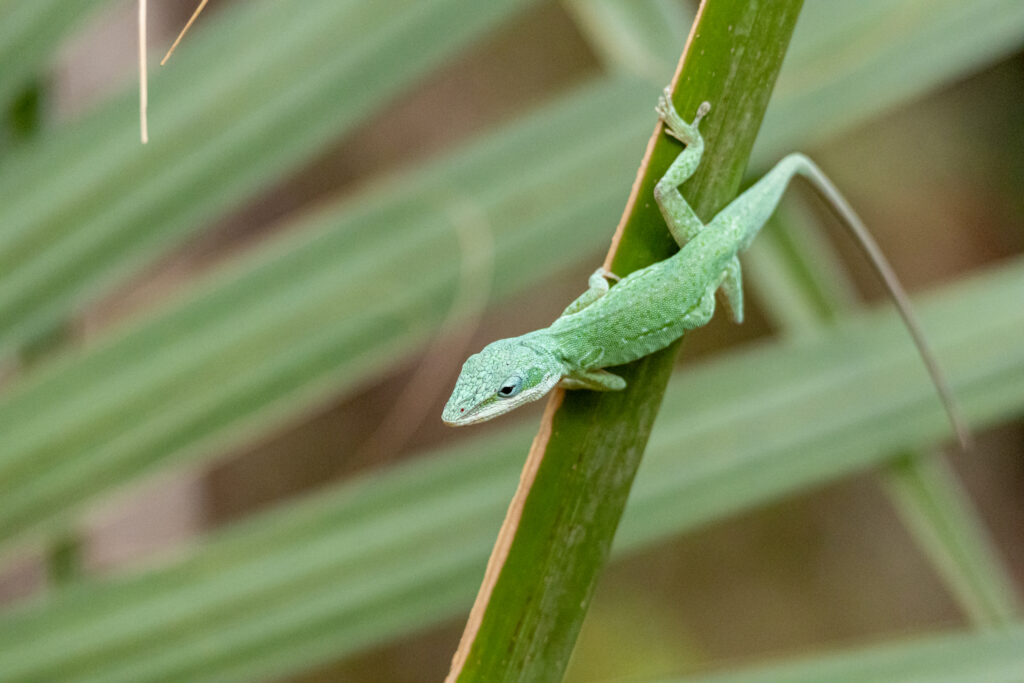
Green anole. Photo by Federico Acevedo
Green anoles (Anolis carolinensis) are native to the southeastern United States and range throughout Florida. They can change color from green to brown to blend with their surroundings. Males have a bright pink throat flap they show off to attract mates and mark their territory.
Once extremely common in Florida, green anoles have had competition from invasive Cuban brown anoles for more than 100 years. To adapt to this pressure green anoles have moved higher into tree canopies to coexist. Providing a variety of shrubs and trees of different heights in gardens and yards can benefit native green anoles.
Eastern Glass lizards (Ophisaurus ventralis) are native legless lizards found throughout Florida. Though they resemble snakes at first glance, legless lizards are a distinct group of reptiles that lack legs but have key features that set them apart—such as visible eyelids and external ear openings, which snakes do not have.
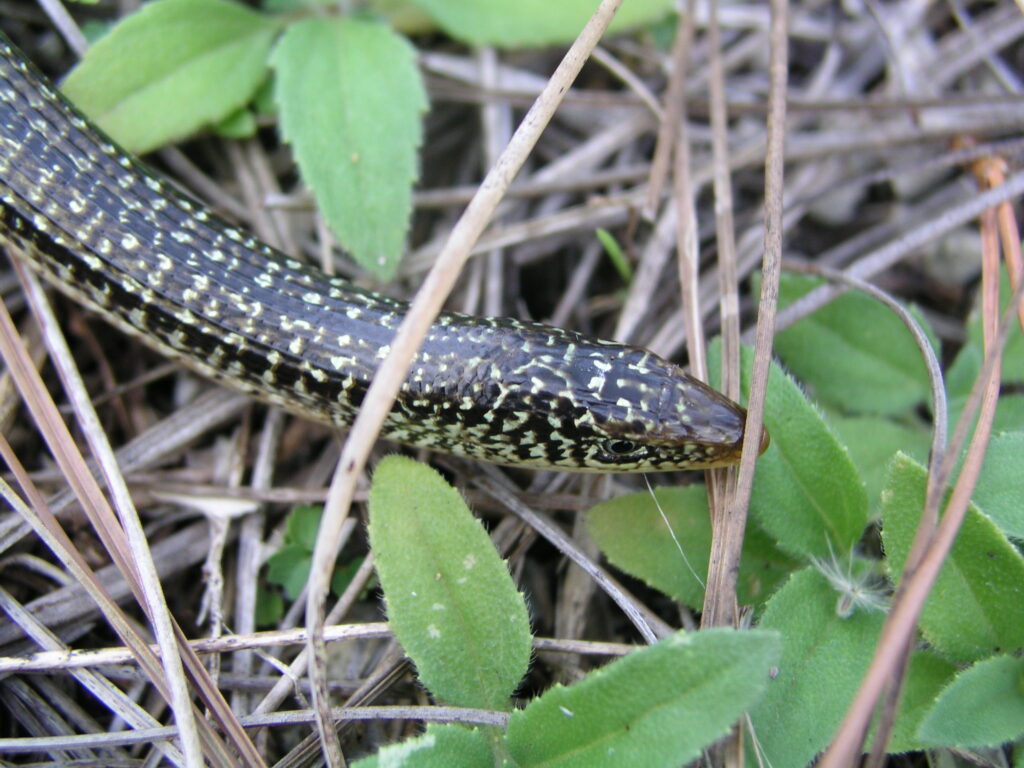
Eastern glass lizard. Photo by National Park Service
Eastern glass lizards live in meadows, grasslands, flatwoods, and occasionally neighborhood yards. They are typically tan, brown, or greenish in color, often with dark stripes along their backs. These lizards can grow up to three feet long, with much of their length coming from their tails, giving them a strikingly snake-like appearance.
While you might prefer to observe them from a distance, Florida’s native snakes fill important ecological roles. They help regulate rodent populations and serve as a food source for many other species, especially owls, herons, hawks, and other birds.
Florida is home to 46 species of native snakes and only six are venomous. Though snakes are often thought of as aggressive, most snakes try to avoid people and pets!
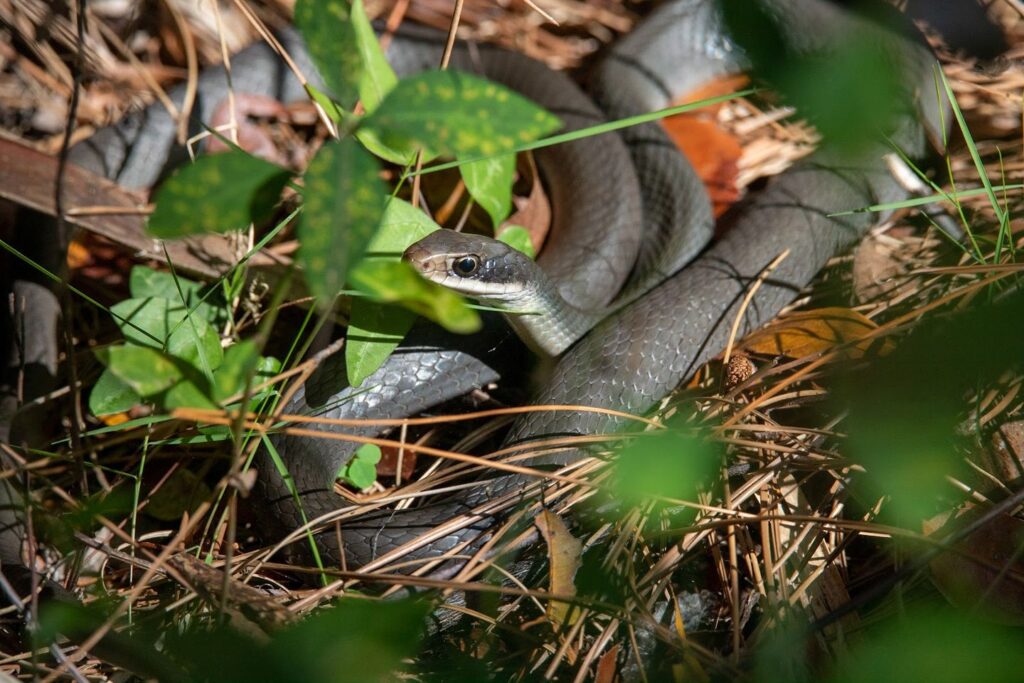
North American racer. Photo by Federico Acevedo
Northern American racers (Coluber constrictor) are common in a variety of habitats throughout Florida, including residential yards. These slender, shiny black snakes have white markings on the throat and chin. Racers are very fast and eat an amazing variety of other animals including frogs, lizards, small snakes, small mammals, insects, turtles, fish and more.
Rough greensnakes (Opheodrys aestivus carinatus) are Florida’s only bright green native snake. They occur throughout the central and southern peninsula, as well as the Florida Keys, and can be found in habitats ranging from forests and hammocks to dune meadows and nearby neighborhoods.
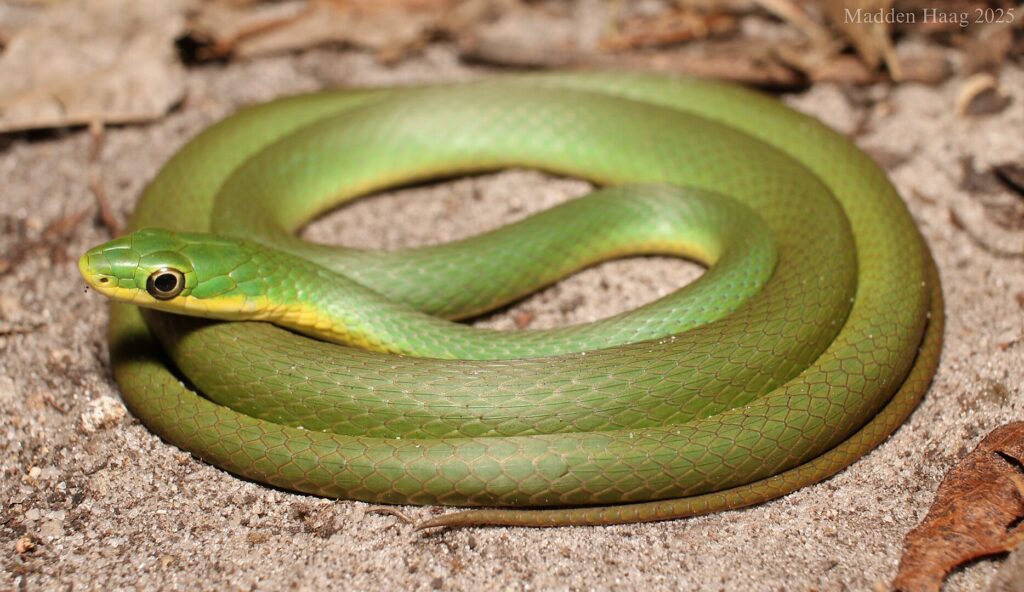
Rough green snake. Photo by MH Herpetology
They live primarily in densely–leafed trees and shrubs, where they blend in beautifully with their surroundings. Active during the day, they feed on a wide variety of insects and spiders.
Keeping it Green for the Locals
By creating a wildlife-friendly habitat in our yards and gardens, we can support Florida’s incredible diversity of reptiles and amphibians. Planting with native wildlife in mind not only benefits local ecosystems but also invites more opportunities to observe and appreciate the natural world right outside our doors. A herp-friendly garden is a small step with a big impact—for your backyard, your community, and wild Florida.


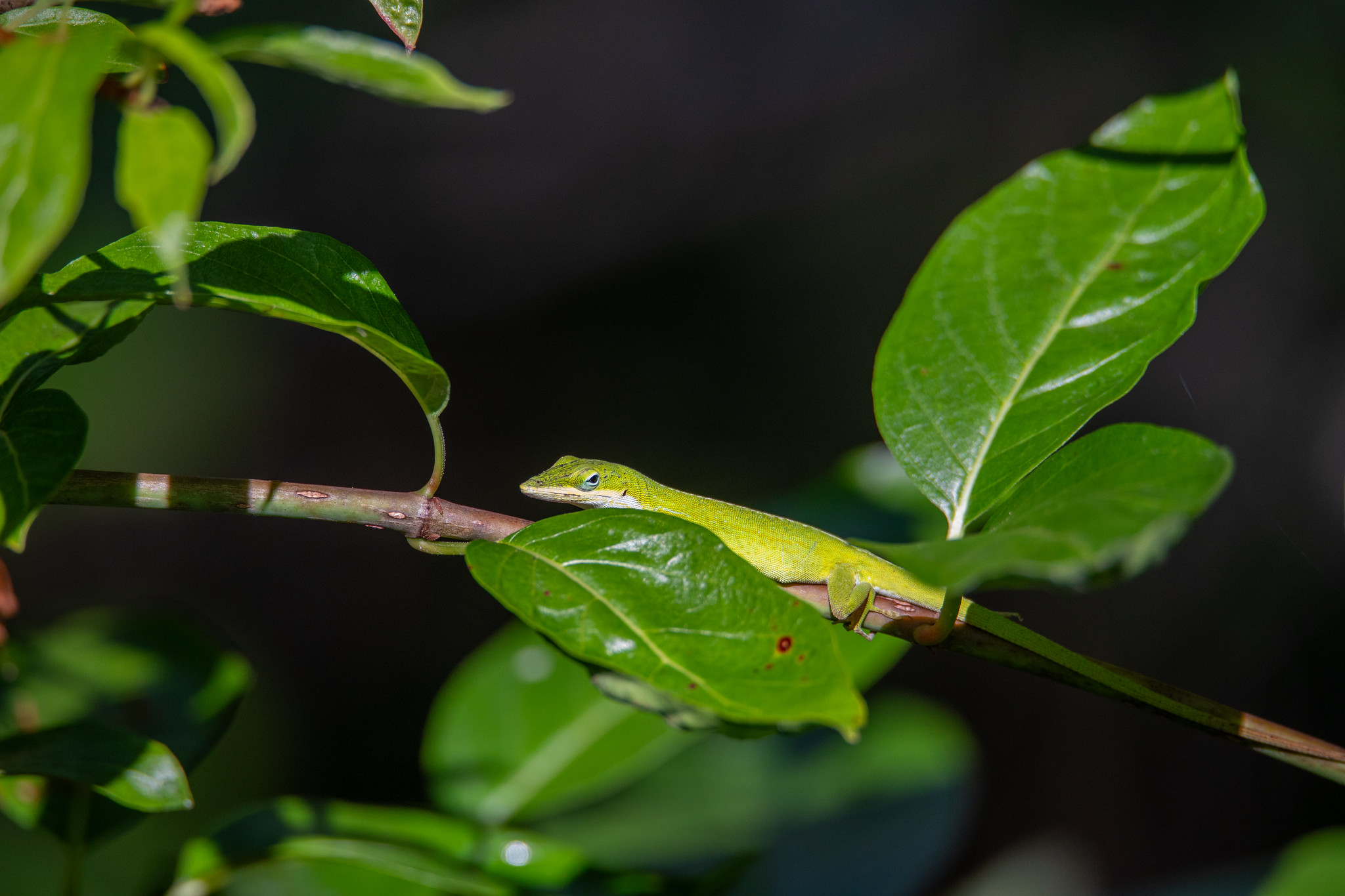

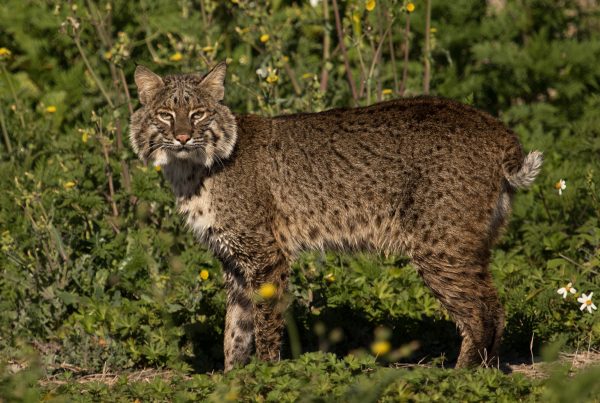
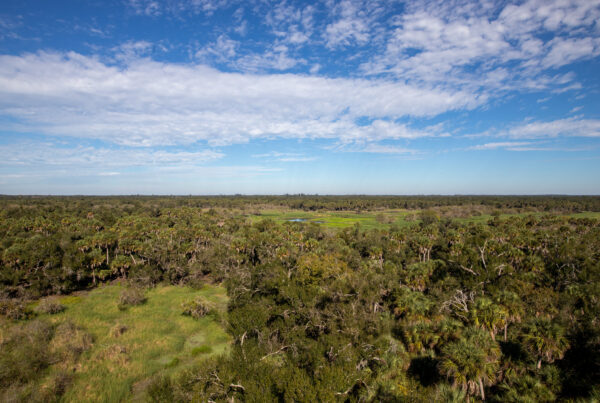

Thanks for the beautiful photos and the short and clear information that I am going to print out. I am in the final stages of creating an approximately multi-faceted Monarch Butterfly garden at one side of my house and will start on an 2nd 100-150ft. one on the other side. Any advice would be appreciated, Thank you Susanne
Absolutely marvelous. Thank you so much.